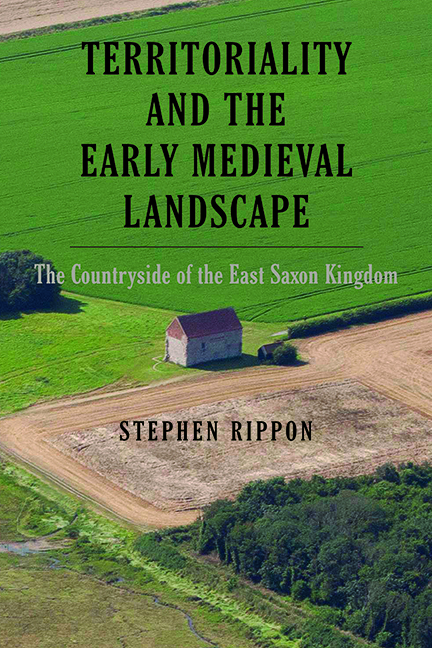Book contents
- Frontmatter
- Dedication
- Contents
- List of Illustrations
- List of tables
- List of Abbreviations
- Acknowledgements
- Glossary
- Preface
- Part I Background
- Part II The Early Folk Territories
- Part III Discussion and Analysis
- Appendix 1 Domesday Population Densities Across the ‘Rochford Peninsula’ Early Folk Territory
- Appendix 2 Sites Used in the Analysis of Animal Bone Assemblages
- Appendix 3 Sites Used in the Analysis of Charred Cereal Assemblages
- Bibliography
- Index
- Garden and Landscape History
Chapter 2 - Territoriality in Early Medieval England
Published online by Cambridge University Press: 26 May 2022
- Frontmatter
- Dedication
- Contents
- List of Illustrations
- List of tables
- List of Abbreviations
- Acknowledgements
- Glossary
- Preface
- Part I Background
- Part II The Early Folk Territories
- Part III Discussion and Analysis
- Appendix 1 Domesday Population Densities Across the ‘Rochford Peninsula’ Early Folk Territory
- Appendix 2 Sites Used in the Analysis of Animal Bone Assemblages
- Appendix 3 Sites Used in the Analysis of Charred Cereal Assemblages
- Bibliography
- Index
- Garden and Landscape History
Summary
THIS CHAPTER INTRODUCES THE development of territorial structures in eastern England during the early medieval period. It starts with a summary of what we know about the late prehistoric and Roman periods, before then considering the formation of Anglo-Saxon kingdoms. The concept of ‘early folk territories’ (and the multiplicity of terms that have previously been used for them) is then introduced, before a discussion of their fragmentation into estates held by the king, ecclesiastical institutions and private individuals. The subsequent development of a hierarchy of administrative territories known as shires, hundreds and vills is then considered. There is a large body of literature on these various topics and so the aim of this chapter is simply to introduce key issues, concepts and terminology, with references directing the reader to more detailed studies.
THE ANTECEDENT LANDSCAPE: LATE PREHISTORIC AND ROMAN-BRITISH TERRITORIALITY
Kingdom, Civitas, and County (Rippon 2018a) proposed that by the Middle Iron Age three broad regions had emerged across eastern England. The Northern Thames Basin extended north from the Thames to the Chiltern Hills of northern Hertfordshire and the Boulder Clay-capped uplands of north-west Essex and south-west Suffolk, while East Anglia covered the rest of Suffolk and Norfolk as far west as Fenland, and the South-east Midlands extended north from the Chilterns as far as the Wash. These zones are reflected in the emergence of regionally distinctive suites of material culture (e.g. pottery and loomweights), differences in settlement patterns (e.g. the construction of hillforts and the morphology of smaller settlement enclosures) and distinctive approaches towards land division (e.g. the digging of pit alignments). What is particularly striking is that when this Middle and Late Iron Age regional variation in landscape and material culture is compared with that evident in the Romano-British and early medieval periods the boundaries between them appear to have lain in broadly the same zones of sparsely settled high ground. So what do these regions represent? They were very large: East Anglia covered c.9,600km, the Northern Thames Basin c.8,000km and the South-east Midlands at least 4,500km2 (its western boundary has not been fully established yet).
- Type
- Chapter
- Information
- Territoriality and the Early Medieval LandscapeThe Countryside of the East Saxon Kingdom, pp. 43 - 58Publisher: Boydell & BrewerPrint publication year: 2022

